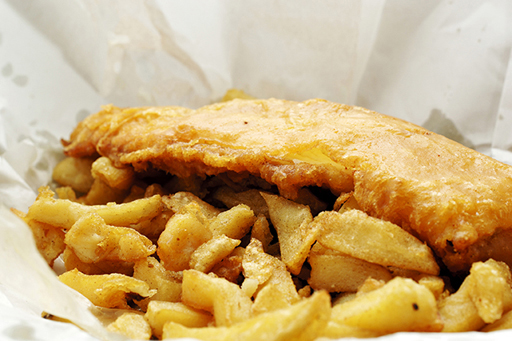3.2 Fat makes food taste good
Fat plays many essential roles in the body. It is needed to produce the membrane surrounding every cell, and all our nerves are surrounded by an insulating layer of fatty molecules. It is also involved in blood cell formation, immune responses and heart function. Steroid hormones are formed from fats and, of course, fat provides a layer of protection and insulation beneath the skin.
So, we do need some fat in our diet, just not too much. Fat is energy-dense; that is, we get a lot of energy from a small amount of fat. And, unlike amino acids from protein, which the body gets rid of in urine if we eat too many, the body does not get rid of the excess fat we eat. It is just added to the stores beneath our skin.
The problem is that many people find the fat in food tastes good (Figure 8).
Fried food is very popular. But if you eat too much, and don’t use up the energy it contains in exercise, it can lead to furred-up arteries and obesity. When manufacturers try to reduce the fat in food, by producing low-fat versions, people don’t always like them as much.
It is possible to add extra herbs and spices to give an attractive flavour and aroma to low-fat savoury dishes. In low-fat desserts, such as yoghurts, the flavour is often improved by adding sugar. In fact, some low-fat yoghurts can have almost as many calories as the full-fat versions because of the added sugar. However, taste perception can be changed. Although changes in fat content can alter the taste of food, you can get used to having less. You will discover more about how we taste food later in the course.

